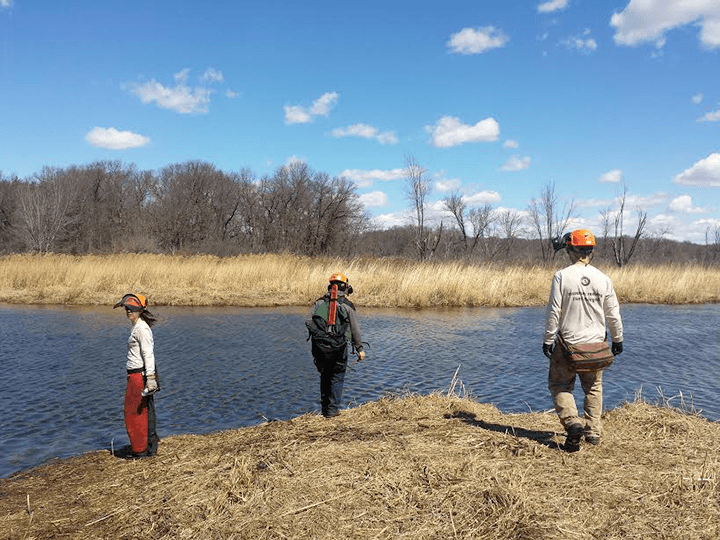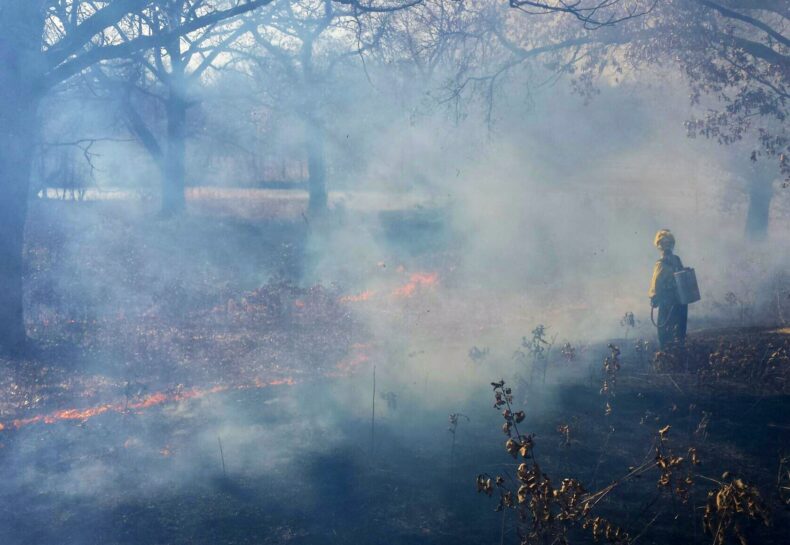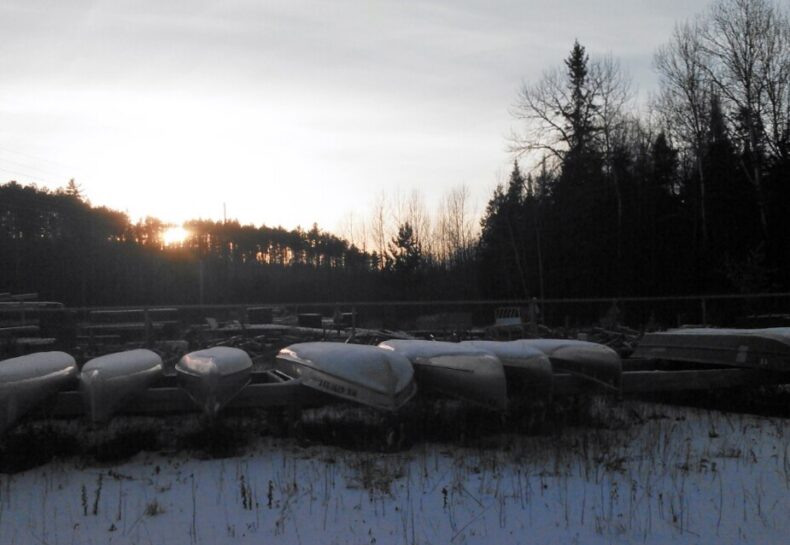Member Stories
Firebreaks but no fire at the refuge
For the past month the Metro Roving crew has had the good fortune of working at Sherburne National Wildlife Refuge. I grew up visiting state and national parks with my family, but had no idea that there are 560 refuges in the U.S.! These places provide habitat for hundreds of bird, mammal, reptile and amphibian species, including many that are threatened or endangered. Read More
Buckthorn busters
What started out as an ornamental hedgerow material brought over from Europe in the 1800s, common or European buckthorn can now be found in just about every county in Minnesota. Buckthorn is one of the first plants to leaf out in the spring and last to lose its leaves in the fall, allowing it to do a spectacular job at outcompeting and preventing the growth of native species. Read More
Burn season in Minnesota
Spring is here, bringing with it the return of a variety of native and non-native species. As the snow melts and the ground finally thaws, Minnesota’s familiar plant species eagerly sprout to meet the sun. It’s an invigorating sight after a long, dismal winter. However, many of the early-riser species in Minnesota are considered invasive. Read More
Meet our 2015 bloggers
We are SO excited to have a new group of corps members blogging about their experience this year! This year's group includes people from field crews and our Youth Outdoors program and we look forward to hearing about their unique experiences from the field. Watch this space for new posts once or twice a week from now until the end of November. Read More
The journey
As the end of this journey nears I am filled with trepidation, but also hope. The uncertainty of the future is what keeps the mind sharp in the present. We must march on towards the goals we set only to form new ones when the previous is reached, such is the engine of progress. In the final weeks of my term here I look back fondly on the people I have met and worked with, the places I have seen and the changes I have made on a landscape I have grown to love. Read More
The after shot
Last time I left you all with the story of my pre-installation excitement. Now I can finally say that our mission is accomplished! Installation day has come and gone and the work went more smoothly than I had hoped. Ben and Roger from RREAL made the trek down to Anamosa, Iowa and showed some weatherization crew members and me what it means to be solar installation rock stars. You know that feeling you get when you hear your favorite guitar player lay down some tasty licks? That is what was going on inside my head as I stood in a dusty basement watching the whole thing go down. Read More





